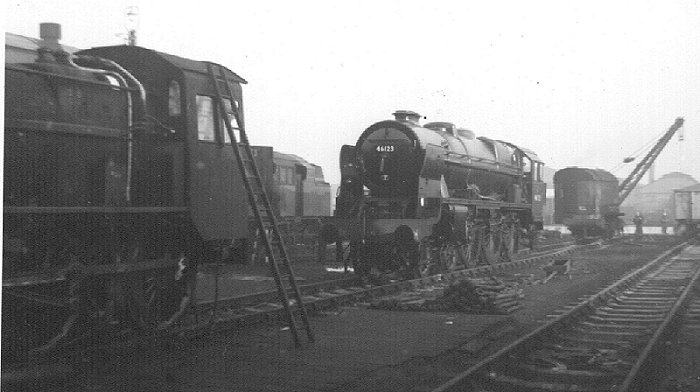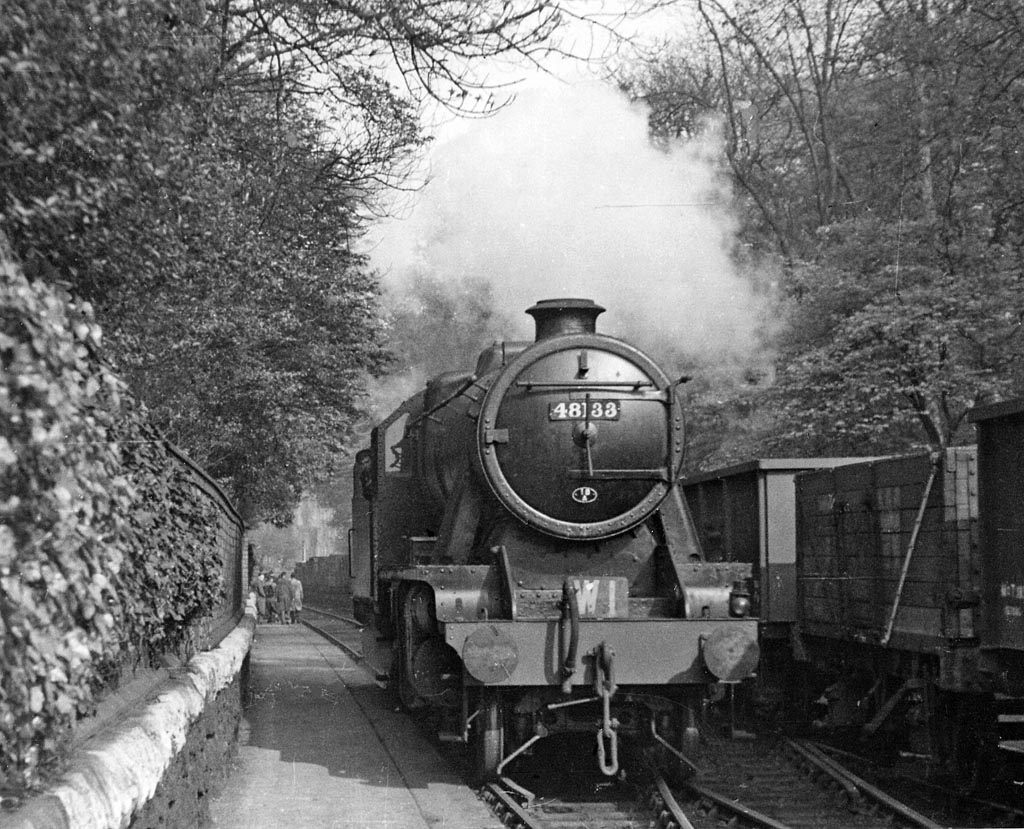Crewe Railway Works on:
[Wikipedia]
[Google]
[Amazon]
Crewe Works is a British railway engineering facility located in the town of
 When the LNWR became part of the
When the LNWR became part of the 
 After
After
Historic Crewe Works to receive upgrade amid new HS2 contract
Nantwich News, December 16, 2021 Manufacturing is expected to start in 2025.
Crewe
Crewe () is a railway town and civil parish in the unitary authority of Cheshire East in Cheshire, England. The Crewe built-up area had a total population of 75,556 in 2011, which also covers parts of the adjacent civil parishes of Willaston ...
, Cheshire
Cheshire ( ) is a ceremonial and historic county in North West England, bordered by Wales to the west, Merseyside and Greater Manchester to the north, Derbyshire to the east, and Staffordshire and Shropshire to the south. Cheshire's county t ...
. The works, which was originally opened by the Grand Junction Railway in 1840, employed around 7,000 to 8,000 workers at its peak. In the 1980s, a lot of the engineering works were closed. Much of the site has been redeveloped but the remaining parts are owned and operated by French-owned multinational rolling stock manufacturer, Alstom SA.
During the late 19th century, the London and North Western Railway
The London and North Western Railway (LNWR, L&NWR) was a British railway company between 1846 and 1922. In the late 19th century, the L&NWR was the largest joint stock company in the United Kingdom.
In 1923, it became a constituent of the Lo ...
used Crewe Works to produce many famous locomotives such as the Webb Jumbo class and the compounds, the Whale Experiment and Precursor classes, and the Bowen-Cooke Claughtons. In particular, Whale's 1912 superheated G1 Class developed from a locomotive introduced by Webb in 1892, lasted, in many cases until 1964, near the end of steam in 1968.
After grouping, the works were taken over by London, Midland and Scottish Railway which was the successor to the LNWR. It was during this period that the works reached its zenith in size and output. Creating notable steam engines such as Sir William Stanier's locomotives as well as the 'Jubilee' and Class 5 4-6-0s, the 'Princess Royal' and the 'Princess Coronation' 4-6-2s.
The works continued to produce engines under British Railways
British Railways (BR), which from 1965 traded as British Rail, was a state-owned company that operated most of the overground rail transport in Great Britain from 1948 to 1997. It was formed from the nationalisation of the Big Four British rai ...
such as the Britannia 4-6-2s and the Franco-Crosti boilered Class 9 freight locomotives. In the 1980s, a large part of the works was sold for redevelopment. Due to the scale of the works, it had its own internal narrow gauge tramway, the Crewe Works Railway, which was used from 1862 until 1932.
History
Grand Junction Railway
The directors of the Grand Junction Railway determined to construct a works on a site at Crewe in 1840 with the first locomotive, No. 32''Tamerlane'' completed in October 1843. By 1846, the demand for space was such that wagon building was moved, first to Edge Hill and Manchester, then to a new works at Earlestown. By 1848, the works employed over 1,000 producing one locomotive a week.London and North Western Railway
In 1845, the Liverpool and Manchester Railway was merged with the Grand Junction. These, in turn, merged in 1846, with the London and Birmingham Railway and the Manchester and Birmingham Railway to form theLondon and North Western Railway
The London and North Western Railway (LNWR, L&NWR) was a British railway company between 1846 and 1922. In the late 19th century, the L&NWR was the largest joint stock company in the United Kingdom.
In 1923, it became a constituent of the Lo ...
(LNWR). All four had their own workshops but, in time, locomotive building was concentrated at Crewe.
In 1857, John Ramsbottom became Locomotive Superintendent. He had previously invented the first reliable safety valve and the scoop for picking up water from troughs between the tracks. He went on to improve the precision and interchangeability of tools and components.
In 1862, locomotive work was transferred from Wolverton. Wolverton became the carriage works, while wagon building was concentrated at Earlestown.
In 1853, Crewe had begun to make its own wrought iron and roll its own rails, and in 1864 installed a Bessemer converter for manufacturing steel
Steel is an alloy made up of iron with added carbon to improve its strength and fracture resistance compared to other forms of iron. Many other elements may be present or added. Stainless steels that are corrosion- and oxidation-resistant ty ...
. In 1868 it became the first place to use open-hearth furnaces on an industrial scale. It also built its own brick
A brick is a type of block used to build walls, pavements and other elements in masonry construction. Properly, the term ''brick'' denotes a block composed of dried clay, but is now also used informally to denote other chemically cured cons ...
works. Later the works was fitted with two electric arc furnaces.
Production increased steadily and, with the sale to the Lancashire and Yorkshire Railway of ten 2-4-0
Under the Whyte notation for the classification of steam locomotives, represents the wheel arrangement of two leading wheels on one axle, four powered and coupled driving wheels on two axles and no trailing wheels.
The notation 2-4-0T indi ...
and eighty six 0-6-0
Under the Whyte notation for the classification of steam locomotives, represents the wheel arrangement of no leading wheels, six powered and coupled driving wheels on three axles and no trailing wheels. This was the most common wheel arrangemen ...
locomotives, privately owned manufacturers took out an injunction in 1876 to restrain the railway from producing anything but its own needs. This remained in force until British Rail Engineering Limited was established in 1969.
By 1920 Crewe Works had grown into a poorly laid-out establishment with nine separate erecting shops, four of which could only handle smaller locomotives, and the LNWR sanctioned plans for a new large erecting shop which placed on hold until revised and implemented later by the LMS.
London, Midland and Scottish Railway
 When the LNWR became part of the
When the LNWR became part of the London, Midland and Scottish Railway
The London, Midland and Scottish Railway (LMSIt has been argued that the initials LMSR should be used to be consistent with LNER, GWR and SR. The London, Midland and Scottish Railway's corporate image used LMS, and this is what is generally u ...
(LMS) in 1923, its passenger locomotives were eclipsed by those of the former Midland Railway, which offered light, fast and frequent services. As traffic density increased, there was a need for longer trains and more powerful locomotives to haul them. In 1932, William Stanier became Chief Mechanical Engineer and set out to rationalise production. Since Crewe had experience with heavier locomotives and had its own steel making facilities, he chose it as his main production location.
There followed the Princesses and Duchesses, along with the Jubilees and the " Black Fives". Crewe produced all the new boilers for the LMS, and all heavy drop stampings and forgings. It also produced most of the heavy steel components for the track and other structures. The 1935 documentary ''No. 6207; A Study in Steel
''No. 6207; A Study in Steel'' is a 1935 British documentary film about the construction of a steam locomotive, the London Midland and Scottish Railway Princess Royal Class No. 6207 '' Princess Arthur of Connaught''. The short film, which was co-pr ...
'' about the construction of an LMS Princess Royal Class engine was filmed at the works.
During World War II, Crewe produced over 150 Covenanter tanks for the army.

British Railways
 After
After British Rail
British Railways (BR), which from 1965 traded as British Rail, was a state-owned company that operated most of the overground rail transport in Great Britain from 1948 to 1997. It was formed from the nationalisation of the Big Four British rai ...
ways (BR) was formed in 1948, Robert Riddles
Robert Arthur "Robin" Riddles, CBE, MIMechE, MinstLE (23 May 1892 – 18 June 1983) was a British locomotive engineer.
Biography LNWR and LMS
Riddles was born in 1892 and entered the Crewe Works of the London and North Western Railway as a pre ...
introduced the BR standard classes, and Crewe built Britannia and Clan
A clan is a group of people united by actual or perceived kinship
and descent. Even if lineage details are unknown, clans may claim descent from founding member or apical ancestor. Clans, in indigenous societies, tend to be endogamous, meaning ...
mixed traffic engines and some of the Class 9 freight locomotives. The last steam locomotive built at Crewe, Class 9 number 92250, was completed in December 1958. Crewe Works built 7,331 steam locomotives.
Diesel production commenced, with D5030 the first main line example completed in 1959. The final diesel locomotives built at Crewe Works were the Class 56 with the last completed in 1984, while the final class of electric locomotives were the Class 91 with the last completed in 1991.
Modern ownership
Crewe Works became a part of British Rail Engineering Limited when the former BR Workshops were set up as a separate business in 1969 and was privatised in 1989. In the mid 1980s, much of the Crewe Works site was cleared and sold for major redevelopment. Around this time, British Rail Engineering Limited was sold to ASEA Brown-Boveri, which merged withDaimler Benz
The Mercedes-Benz Group Aktiengesellschaft, AG (previously named Daimler-Benz, DaimlerChrysler and Daimler) is a German Multinational corporation, multinational automotive corporation headquartered in Stuttgart, Baden-Württemberg, Germany. It ...
in 1996 to form Adtranz. Adtranz was itself taken over by Bombardier in 2001. Via the sale of Bombardier Transportation to Alstom in January of 2021 the plant became part of Alstom UK & Ireland.
At its height, Crewe Works employed between 7,000 and 8,000 people; in 2005 fewer than 1,000 remained on site, with a further 270 redundancies announced in November of that year and more cutbacks or even closure possible. Current work is largely focused on general maintenance and the inspection of seriously damaged stock. Much of the site once occupied by the works has been sold off and is now occupied by a supermarket, leisure park and a large new health centre. In 2019 another part of Crewe Works was demolished for a new housing estate.
In December 2021 the contract for delivery of HS2 rolling stock was awarded to a partnership between Hitachi Rail and Alstom. Alstom’s share in manufacturing of the 54 trains will take place at Derby Litchurch Lane Works and Crewe Works. All the bogie
A bogie ( ) (in some senses called a truck in North American English) is a chassis or framework that carries a wheelset, attached to a vehicle—a modular subassembly of wheels and axles. Bogies take various forms in various modes of transp ...
s, which house the wheelsets, will be both assembled and maintained at Alstom's Crewe facility.Nantwich News, December 16, 2021 Manufacturing is expected to start in 2025.
Notes
;Citations ;Bibliography * * * * * * * * * *External links
* {{Authority control Locomotive manufacturers of the United Kingdom Railway workshops in Great Britain Buildings and structures in Crewe Bombardier Transportation